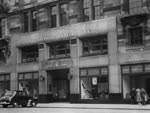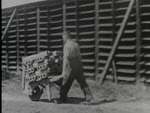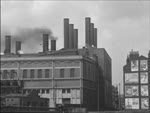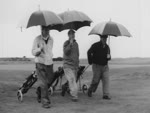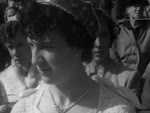THEY'RE EVERYWHERE

This video is not available to view remotely
Video 1 (currently displayed video)
Full length video - full length available onsite
Video 2
The art and craft of pattern making and core making for sluice valves at Glenfield and Kennedy Ltd., Kilmarnock. Note how the women workers are praised for their ‘deft hands’ in the ’delicate work’ of core making. (clip)
Please read Understanding catalogue records for help interpreting this information and Using footage for more information about accessing this film.
Title: THEY'RE EVERYWHERE
Reference number: 6100
Date: 1956*
Director: d. John S. Abbott Jnr. M.B.K.S.
Production company: Big Six Film Unit
Sound: sound
Original format: 16mm
Colour: bw
Fiction: non-fiction
Running time: 38.12 mins
Description:
The manufacture of sleuce values at Glenfield and Kennedy Ltd., Kilmarnock. Traces their production from the design stage through casting, forging, and assembly, to subsequent testing. This film gives a clear overview of all the work carried out at Glenfield's. Glenfield's sleuce valves were in high demand all over the world, and were used for many varied industrial processes: they're everywhere!
James Nasmyth was the engineer responsible for the invention of the sleuce valve.
Credits:
technical supervision E. Bruce Ball Esq.
ph. Alfred Kerntiff
sd. C.W. Green A.M. Inst. B.E.
m. de Wolfe
nar. Lionel Marson
devised and produced by Edward Cook
Shotlist: [BBFC censor certificate passed for General Exhibition] (0.00) title and opening credits (0.40) diagram of sleuce valve, the commentary noting that it was invented by engineer James Nasmyth (0.53) montage featuring the various uses for sluice valves - to include reservoirs, pressure filters, feed and wash water lines, slow sand filters at controlled points, in pumping stations for the control of suction and delivery lines, pipelines for isolating and washout points, sewage plants, hydro electric power schemes, thermal power stations on circulating water lines, in oil installations, in industrial plants, in collieries for the control of drainage water, and on ships on tanker networks (1.46) aerial shot Glenfield and Kennedy Ltd., Kilmarnock, Scotland, valve manufacturers (2.13) ints same engineering works, wide angle shot factory floor (2.21) ints drawing office where designers and draftsmen are seen at work, ints tracing office (2.46) batons of metal and wood with complimentary core boxes are prepared to exact specification before casting can be made (3.03) patterns are prepared for standard repetition work - materials include gun metal, cast iron and aluminium (3.14) lathes, grinders, bandsaws and universal woodworking machines are used to produce patterns (3.35) handfinishing wooden patterns (3.58) heavier sections of metal are produced using existing wood patterns with modifications (4.07) cores are made to complete the moulds produced from the patterns, sea sand mixed with suitable binding agents are rammed into core boxes, frequently made in sections, gvs women working on cores (4.46) larger cores being made on the floor, a man pressing sand in using broom (4.55) newly made cores are transported on smooth running steel band conveyor to coke fired stoves for drying (5.03) gvs supervised drying (5.16) assembled and dried cores are coated with solution to prevent fusion of the sand by the hot metal then placed on pendulum conveyor for distribution throughout the foundry (5.29) foundry sand slinger throws sand into moulding boxes, gvs mechanised production line (6.20) cores positioned and prepared (7.00) preparing repetitive moulding on rollover machine (8.01) ints laboratory where metal is analysed (e.g. pig metal), gvs controls and monitoring, shot of female scientist in lab. coat (8.35) alloy is checked under microscope, c/u specimen of high strength cast iron, micro photographs are taken (9.16) testing hardness and strength of metals being used, tensile testing machine in action (10.03) transverse (?) testing machine in action - a bar is broken and results recorded (10.20) the hardness testing machine using hydraulic pressure (10.57) gvs process of making 'meonite', a high grade cast iron used in all Glenfield projects (11.43) ladles move along overhead runway to moulds which move on conveyor. Pouring molten metal into mould (12.16) moulds are conveyed to vibrating grids releasing the red hot castings from the moulding sand. Mouldings are transported by conveyor to the fettling shop (12.42) ints fettling shop mechanically cleaning castings, final finishing of castings by grinding (13.30) hand finishing (14.13) exts where castings are treated in heated bath (Dr. Angus Smith solution?) to protect against corrosion (14.51) brass foundry where non ferrous parts are made using crucibles or furnaces. Nuts, screws and ingots are cast in special split metal moulds (16.05) ingots piled up - they are all different sizes (16.12) ints smithy where heated in oil fired furnaces then passed on to drop hammers where men shape the red hot pieces of metal (17.11) ints machine shop, forgings are turned in lathe (17.48) c/u as thread on screw is made using lathe (18.29) wide angle view shop floor, gvs and c/u machines and equipment (18.58) cover flanges being machined and milled (19.26) sluice valve connecting flanges have holes drilled (20.15) the recesses for the seats are cut with deliberate care on machine cast steel valve body for use in oil industry (20.44) the doors or wedges of sluice valve are machined to receive seats, c/u machining, the ring is forced into position under hydraulic pressure (21.59) view over huge shop floor, gvs roller conveyors (22.08) components classified and stored in same size groups, elevated gvs store men putting parts onto pallet for forwarding to assembly line (22.28) gvs assembly line, checking and adjusting, setting of joint to prevent leakage and so forth - operating cap secured, works identification number is attached and then put to test shop (25.19) ints test plant where three tests are carried out including ones on pressure, water tightness - some are tested with one flange free (27.40) gvs varied sluice valves piled up (27.52) machining valve using vertical boring mill, a large door is machined (29.14) operating screws for large valves are machined. The upper part of the body is threaded over the operating screw, gvs assembly (30.12) gvs bypass assembly valves (30.42) valves are tested fully and final closing of door is carried out to ensure complete water tight bearing (32.36) operating gearing is fitted, and assembly of electric sluice valves (33.10) large sluice valves in test bay (34.14) final testing for all sorts of valves - including valves made in cast steel for oil refineries, valves for water works, sluice valves for oil services sidelines, simple gearing for water works, hydraulic, high pressure service, bypass underground water mains, outside screws, heavy duty for operation under high unbalanced pressure, those operated by electric motor. gvs packing valves carefully to avoid damage (36.14) dispatch department where destination is stencilled on box (36.42) lorry leaves Glenfield and Kennedy Ltd., Kilmarnock, loaded with cargo (37.25) gvs dockside, including cranes and boats (38.01) THE END (38.11)

